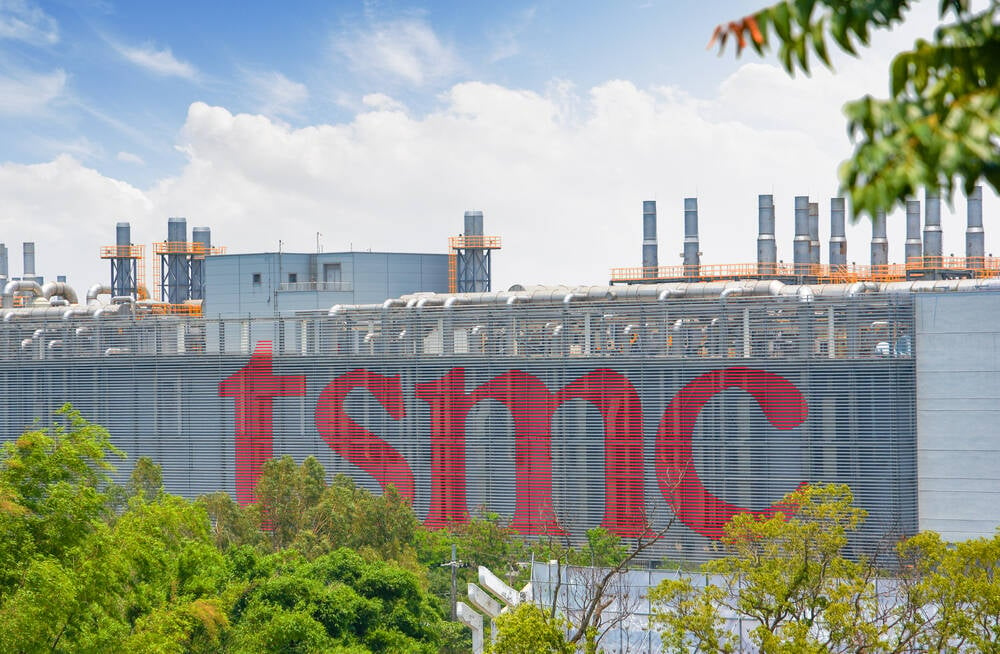Has The Semiconductor Down Cycle Reached Its Nadir? TSMC Thinks So

Chipmaker TSMC had a mixed final calendar quarter of 2023, with profit falling less than expected and revenue growth “essentially flat,” in another sign that the global semiconductor downturn is over.
Chief executive CC Wei said of the quarter: “Our business has bottomed out on a year-over-year basis, and we expect 2024 to be a healthy growth year for TSMC, supported by continued strong ramp of our industry-leading 3nm technologies, strong demand for the 5nm technologies and robust AI-related demand.”
The world's largest silicon contract manufacturer reported revenue in US dollars of $19.62 billion for Q4. This is a whisker above its guidance of $18.8 to $19.6 billion, but only slightly down on the $19.93 billion it reported this time last year.
TSMC’s revenue is, however, up 14.4 percent from the $17.28 billion it brought in during Q3 2023, and that figure was in turn up by about 10 percent on the quarter before that, showing an obvious trajectory for the financial results.
The company’s net income to shareholders was reported as NT$238.7 billion ($7.56 billion), which is up 13 percent from the NT$211 billion ($6.68 billion) of last quarter, but still 19 percent less year-on-year.
Looking at TSMC’s production of wafer shipments during the quarter, 5nm was the largest single process node by revenue, at 35 percent. 7nm accounted for another 17 percent, while the current most advanced 3nm nodes accounted for 15 percent of revenue.
The latter figure shows that 3nm uptake is indeed increasing, as it made up just 6 percent of TSMC’s wafer revenue in the previous quarter. Older nodes such as 16nm still accounted for 8 percent, with 28nm at 7 percent, but advanced nodes, which TSMC now defines as 7nm or better, accounted for 67 percent of wafer revenue for this quarter.
When looked at by market segment, HPC and smartphone were the big earners for TSMC, both accounting for 43 percent of revenue. The HPC share of revenue has grown by 17 percent compared with the previous quarter, while smartphone is up by 27 percent.
Automotive and IoT both accounted for 5 percent, but automotive’s share of TSMC revenue has increased since the previous quarter, while that of IoT has shrunk by about a third.
Looking ahead to earnings for the first calendar quarter of 2024, TSMC said it expects revenue to be between $18 and $18.8 billion. This would be down from the latest figure, but still an improvement on the $16.72 billion it reported for Q1 2023, when its revenue declined for the first time in four years.
“Moving into first quarter 2024, we expect our business to be impacted by smartphone seasonality, partially offset by continued HPC-related demand,” Huang said.
TSMC expects its 2024 capital budget to be between $28 and $32 billion. This compares with the $32 to $36 billion it forecast for 2023, but which is understood to have actually been about $30 billion.
“2023 was a challenging year for the global semiconductor industry, but our technology leadership enabled TSMC to outperform the foundry industry,” Huang commented.
He also struck an optimistic note looking ahead, telling investors that: “Despite a challenging 2023, our revenue remains well on track to grow between 15 and 20 percent CAGR over the next several years in US dollar terms, which is the target we communicated back in the January 2022 investor conference,” Huang commented.
- Asia beat US, EU in chip building because the West didn't invest, Intel CEO claims
- STMicroelectronics slims to be lean, mean, chipmaking machine
- Microchip nabs $162M to keep chips for washing machines – and missiles – flowing
- 2024 sure looks like an exciting year for datacenter silicon
Chief exec Wei added he expected the overall semiconductor market, excluding memory, to increase by more than 10 percent during 2024. Analyst Gartner recently estimated that global semiconductor revenues will rise 16.8 percent this year, following a contraction in sales during 2023. ®
From Chip War To Cloud War: The Next Frontier In Global Tech Competition
The global chip war, characterized by intense competition among nations and corporations for supremacy in semiconductor ... Read more
The High Stakes Of Tech Regulation: Security Risks And Market Dynamics
The influence of tech giants in the global economy continues to grow, raising crucial questions about how to balance sec... Read more
The Tyranny Of Instagram Interiors: Why It's Time To Break Free From Algorithm-Driven Aesthetics
Instagram has become a dominant force in shaping interior design trends, offering a seemingly endless stream of inspirat... Read more
The Data Crunch In AI: Strategies For Sustainability
Exploring solutions to the imminent exhaustion of internet data for AI training.As the artificial intelligence (AI) indu... Read more
Google Abandons Four-Year Effort To Remove Cookies From Chrome Browser
After four years of dedicated effort, Google has decided to abandon its plan to remove third-party cookies from its Chro... Read more
LinkedIn Embraces AI And Gamification To Drive User Engagement And Revenue
In an effort to tackle slowing revenue growth and enhance user engagement, LinkedIn is turning to artificial intelligenc... Read more

